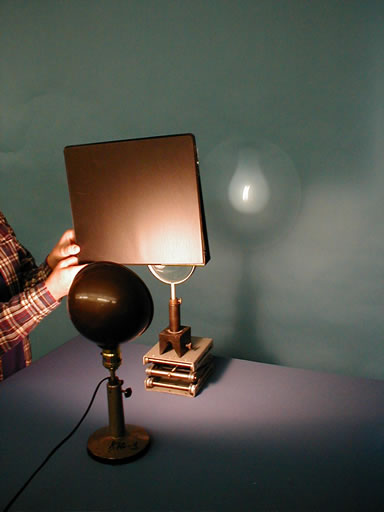Demos: 7A-34 Image by Partial Lens

Directions: Dim the room lights and use a large diameter convex lens to project an image of a frosted light bulb on the screen. (Place a blocking device behind the bulb to prevent glare in the students’ eyes.) Once the image has been focused on the screen, slowly lower the card in front of the lens. The image will get dimmer, but remain complete until you have completely blocked the lens.
Suggestions for Presentation: “Common sense” tells the student that if you block a portion of the lens, you will lose the corresponding part of the image. Since the image is upside down, ask the students, “If I lower this card in front of the lens from the top down, which part of the image will be blocked first?” After gathering the responses, slowly lower the card. There will be considerable surprise that the image remains whole. This presents an opportunity to use ray diagrams to show that light from all parts of the bulb can still reach the screen as long as there is some part of the lens exposed. Point out that if you were to mask off the outer portion of the lens, you would just have a smaller lens, but you would still get a complete image, just dimmer.
Applications: The iris diaphragm on a camera allows more or less of the lens to be used. If the diaphragm is opened all the way, more light gets in (low f-number); if “stopped down” (high f-number), less light gets in. (Why one changes the f-number has to do with depth of field and requires examinations of other lens properties.)
Last Updated: Nov 30, 2023 11:25 AM